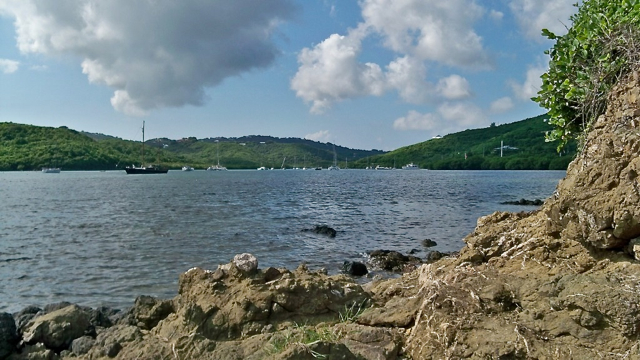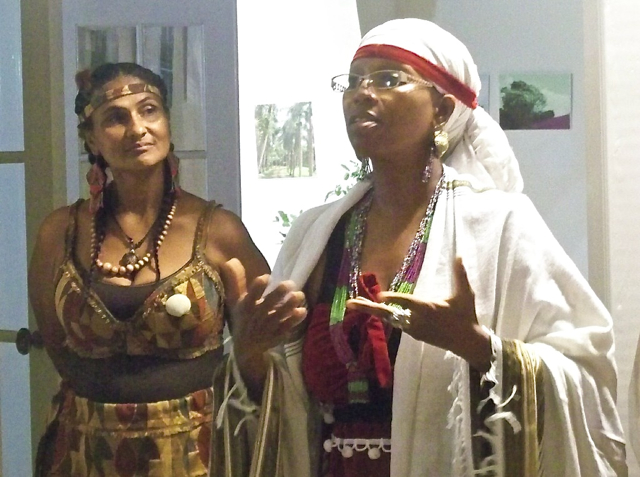
Other presentations during the Friday evening program included discussion of the recreation of the Taino ball court, or batey, found at the Salt River Bay site, and Taino culture.
Salt River Bay is understood to be the site where Columbus landed on his second voyage to the New World in October 1493. It is also the first documented spot where Europeans and indigenous people fought and lives were lost.
Keegan referenced that combat in his opening line, when he said, "Crucians kicked butt."
Keegan, from the University of Florida and curator of Caribbean Archeology at the Florida Museum of Natural History, showed slides of what he called a Taino zombie artifact and pointed out its similarity to the porcupine fish. He said "zombie powder" came from the porcupine fish, and said Africans transported to the Caribbean as slaves must have interacted intimately with the native Tainos to learn about it.
History, Keegan emphasized, can be seen differently depending on who is interpreting it.
For instance, Columbus’s left a description of the explorer as a peerless individual. Columbus never drank, never cussed, never treated anyone badly, and was just an all-around wonderful person.

Keegan also questioned the widespread belief that two warring tribes – the Taino and the more war-like Carib – were present in the Caribbean when Columbus arrived. The professor said this interpretation of defining natives as either Caribs or as Tainos came more from what Columbus expected to encounter then what he actually found.
Maekiaphan Phillips claims Amerindian-Taino ancestry and is president of the Opia Taino International. He is also designated as the international liaison of the United Confederation of Taino People.
Phillips, said her DNA and blood tells the truth about her ancestry.
She said Opia Taino International’s mission is to dismiss the myth that Amerindians are extinct, and to protect and preserve all artifacts as well as any and all newly discovered relics of their ancestors found in the Virgin Islands. They also want to teach children their culture, traditions and history. “Our history is beautiful,” Maekiaphan Phillips said.
Friday night’s program also highlighted the importance of the indigenous ceremonial ball court, or batey, and indigenous ceremonial center at Columbus Landing, Estate Salt River.
An exhibit about the batey at the Visitor Contact Station, entitled ‘Imagining the Possibilities,’ discusses the potential of recreating the court which archaeologists found on the site, many pieces of which were dismantled and shipped to Denmark in 1926.
The presentation, conceived by Opal Palmer Adisa and Brian Bishop, demonstrated the concrete preservation efforts at sister batey sites in Puerto Rico, and highlights Salt River as a potential World Heritage site.
Bishop exhibited a miniature ball court he designed.
Adisa is an author, photographer, curator and professor at California College of the Arts. Bishop is a local jewelry designer.
“I’m very excited at the possibility of re-imagining the batey in Salt River, especially if we can retrieve the petroglyphs now in Denmark,” said Emy Thomas, a local author attending the program. “I’m glad the National Park Service is involved because I trust them to make it authentic.”
Bamboula dancers and drummers of PerAnkh performed for the group of about 100 people who attended Friday’s program. Chenzira Davis Kahina also gave a presentation, and local potter Sara Lee Hayes displayed reproductions of pre-Columbian pottery.
Due to the federal austerity plan known as sequestration, the Visitor Contact Station at Salt River Bay will only be open limited hours, from 9 a.m to 3:30 p.m. Tuesdays and Thursdays. Would-be visitors can also call 1-340-773-146 to make an appointment.





